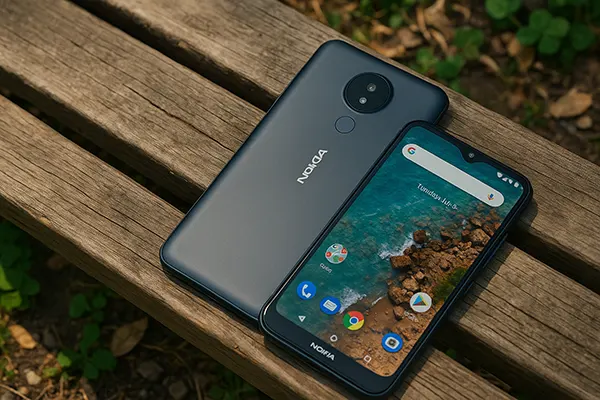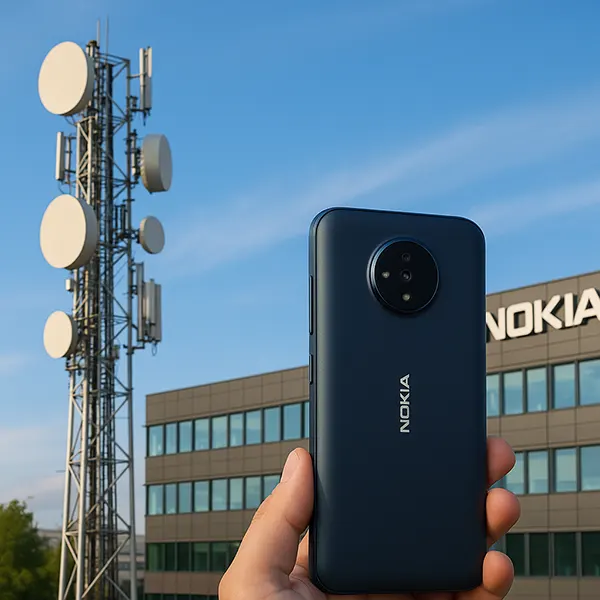
The Return of Nokia: How the Brand Survived, Fell, and Reclaimed Its Niche
Nokia was once the undisputed leader in the mobile phone industry, setting trends and defining standards. However, the same company that once connected the world through reliable handsets eventually stumbled under the weight of rapid technological change and fierce competition. In recent years, though, Nokia has quietly rebuilt its presence, this time in a very different arena — focusing on affordable devices and global telecom infrastructure. This is the story of a fall and a rise, of lessons learned and niches rediscovered.
Nokia’s Decline: Lessons in Innovation Management
In the early 2000s, Nokia dominated the global mobile phone market, peaking in 2007 with over 50% market share in some regions. Despite having early access to smartphone technology, internal decision-making, over-reliance on legacy software (like Symbian), and a lack of urgency in adapting to touchscreen trends led to its downfall. While Apple and Android players surged ahead with agile ecosystems and modern UX, Nokia clung to outdated principles.
Another core issue was the company’s organisational structure. Siloed departments and risk-averse leadership prevented innovation from flourishing. Although there were promising developments internally, many failed to reach the consumer due to management bottlenecks and a slow decision-making process. The internal resistance to radical change proved costly.
By the time Nokia realised the shift in consumer expectations and the dominance of app ecosystems, it was too late. The 2011 partnership with Microsoft and the Windows Phone era failed to win over users. In 2014, Microsoft acquired Nokia’s Devices and Services unit, effectively removing Nokia from the consumer phone market — temporarily.
The Cost of Missed Adaptation
Nokia’s story offers a cautionary tale about innovation. Recognising change is not enough — timely and strategic action is vital. The brand underestimated how fast user needs were evolving, especially in the smartphone era. Their delayed pivot came at the cost of relevance.
In business terms, Nokia faced the “innovator’s dilemma”: protect the profitable core or embrace disruptive transformation. Nokia chose the former — and lost both. Their example is now studied in business schools as a classic case of how even dominant companies can fall.
Yet, Nokia’s foundational strengths — engineering excellence and brand recognition — remained intact. These would eventually form the cornerstone of its rebirth.
The Comeback: Strategic Repositioning and HMD Global
The return of Nokia-branded phones began in 2016 through a licensing agreement with HMD Global, a Finnish company led by ex-Nokia executives. HMD took a different route: instead of chasing premium flagship phones, it focused on delivering clean Android experiences in budget and mid-range segments. The nostalgia for Nokia’s build quality combined with smart pricing worked — particularly in developing markets.
By using Android One and avoiding unnecessary bloatware, Nokia phones under HMD earned a reputation for reliability and long software support. This appealed to value-driven consumers. The consistent design language, regular security updates, and the “pure Android” promise helped Nokia differentiate in a crowded budget market.
Today, Nokia-branded phones are available in over 100 countries. Although not competing head-on with Apple or Samsung in the flagship arena, they’ve carved out a stable presence in markets like India, Africa, and parts of Europe. It’s a strategy rooted in realism — leveraging legacy while avoiding past mistakes.
Partnership with Purpose
The HMD Global partnership reflects a thoughtful pivot. Nokia retained control of its brand while delegating execution to a team aligned with its values and vision. This allowed the company to re-enter the mobile space without the capital burden of manufacturing or distribution.
For HMD, the Nokia name brought instant credibility and consumer trust. Combined with Nokia’s heritage and HMD’s agility, the collaboration brought practical, durable phones back to global shelves.
This model shows how legacy brands can stay relevant by carefully choosing who they partner with, and how they structure these deals. It’s a modern blueprint for brand revival.

Where Nokia Stands Today: B2B, 5G and Beyond
While the phone business is important for brand visibility, Nokia’s real strength today lies in telecommunications infrastructure. The company has repositioned itself as a major player in 5G equipment, rivalling Ericsson and Huawei. As of 2025, Nokia supplies 5G hardware and services to carriers worldwide, with large deals across Europe, Asia, and North America.
This shift back to its engineering roots has paid off. Nokia’s Bell Labs continues to be an innovation hub, contributing to standards and research in next-gen connectivity, including 6G. Its business-to-business focus includes network solutions, enterprise software, and private wireless networks for industries like mining and logistics.
The transition away from consumer dependency toward enterprise contracts has provided stability and future growth opportunities. Nokia’s ability to adapt to the demands of national telecom operators and infrastructure providers signals a mature phase in its evolution.
A Future Anchored in Infrastructure
Nokia is now a trusted name in 5G rollouts, winning contracts not just for equipment but for end-to-end solutions, including cloud-native network architecture. The company’s software division — Nokia Cloud and Network Services — has become a revenue engine.
The geopolitical climate has also worked in Nokia’s favour. With restrictions on Chinese vendors in several Western markets, Nokia has gained market share, especially in Europe. Governments prefer vendors seen as secure and reliable — boxes Nokia ticks confidently today.
Looking ahead, Nokia’s ambition in 6G and its ongoing R&D spending will define its next decade. If the brand maintains focus, it could emerge not just as a survivor, but as a cornerstone of global connectivity in the 2030s.
